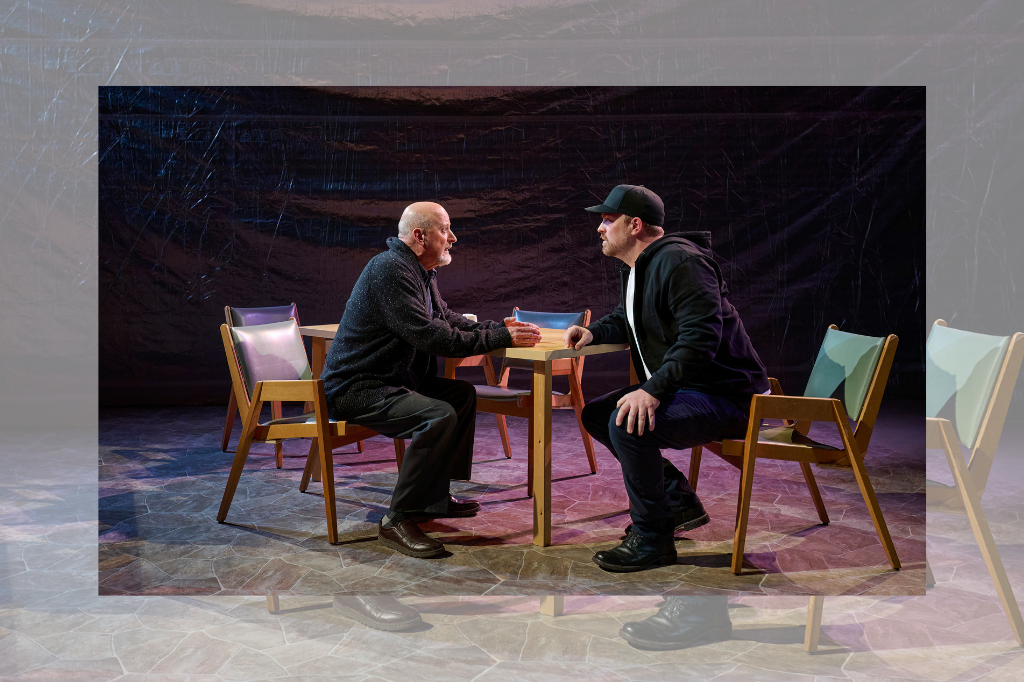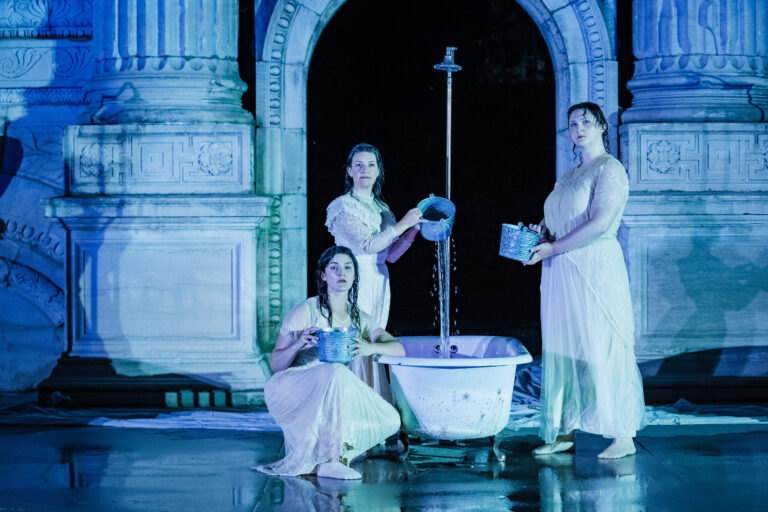REVIEW: A Number at That Theatre Company
Caryl Churchill’s 2002 play A Number is the perfect demonstration of why her work is a staple in the contemporary theatrical canon, showcasing her unflinching approach to writing about socio-political topics as well as her ability to manipulate language. In typical Churchill style, the published text is very spare: no set specifications, few stage directions, and deliberately stylized text. Even the key conflict of the play is never directly mentioned, only hinted at: it’s a surreal story about identity, individuality, and the battle of nature versus nurture.
The 60-minute play sees Salter reconnect with Bernard, his adult son, whose recent experience has thrown the very nature of his identity into question. He’s come to Salter seeking comfort and answers, but as the play progresses, stories change, details twist, and new “Bernards” begin to appear, leaving the audience questioning who Salter really is: master manipulator or penitent father?
A Number is the inaugural production for That Theatre Company, an offshoot of That Arts Group (TAG), created by a solid team of seasoned theatre-makers. Award-winning director Severn Thompson helms the two-hander, which stars Jim Mezon and Craig’s Cookies founder and TAG artistic director Craig Pike as father and son. The pace, set, and sound design are marvellous, but despite the strength of its individual parts, the production never quite realizes its stakes.
The design team embraces the sci-fi elements of the play with nuance. Set designer Steve Lucas uses translucent plastic sheeting to cordon off a small thrust stage in the middle of the church, creating an intimate playing space in the cavernous St. Anne’s Hall. The set is simple — two mint green chairs and a table, with a coat rack and small cabinet in opposite upstage corners — but highly effective. The constrained, sterile playing space gives the feeling of observing a medical trial, unseen by the patients. Yusuke Takase’s lighting design emphasizes the clinical coldness of the space: the audience is partially lit, which only augments the feeling of being an intruder in a private setting.
The high, domed ceilings of St. Anne’s Hall creates a distorted echo, highlighting the most explosive moments in the script. While Heidi Chan’s sound design is mostly limited to scene transitions, an insistent, droning hum fills the space in moments of conflict, and pulsating, lyricless rock music throbs through scene changes: combined with the dimensions of the space, the effect is spectacularly off-putting.
Where this production started to fizzle on opening night was its performances. The first two scenes, which introduce the characters and conflict, felt stilted considering the urgency of the situation. The actors are often seated and remain largely at a distance, grounding the energy in a way that doesn’t quite suit the frenetic tone of the piece: the characters had a detached pensiveness that didn’t match the weight of the identity crisis Bernard is experiencing.
Mezon expertly navigates Salter’s vulnerability and pain, delivering a character who is both villain and victim, but his delivery in the first two scenes felt slightly stiff. Churchill’s text features many interruptions, with characters speaking over each other and changing thoughts mid-sentence. For the first half of the play, these shifts felt clunky and somewhat unnatural; however, Mezon leaned further into the character with every scene, and by the end of the play he was breathing naturalism into a surreal story.
Pike tackles an immense challenge in portraying three characters, and on opening night he was able to navigate their distinct personalities well. However, his performance felt overly controlled: he wasn’t quite able to connect to the weight of the situation and embrace the characters’ reality fully.
Some of the fumbles in the performance might have been saved by more deliberate staging: I would have loved to see more exploration of distance and relationship, and there was plenty of opportunity to explore style and storytelling in Pike’s character transitions. The audience is able to see him changing costumes in the corner of the stage between scenes, and a more artistic approach to those transitions might have maintained more of the tension created in each scene.
Ultimately, what’s lacking in the production are clear stakes: the conflicts of the piece are earth-shattering, reality-bending, but as events unfold, they read more as annoyances or disappointing mistakes rather than the series of cataclysmic revelations they are.
A Number is a difficult piece to tackle as a first undertaking, but the successes of the piece show promise for That Theatre Company’s future. Toronto audiences have proven themselves eager to navigate intellectual, human stories and I hope to see this company continue to challenge their audiences for years to come.
A Number runs at St. Anne’s Parish Hall until May 6, 2023. Tickets are available here.















Comments